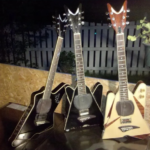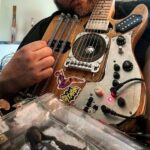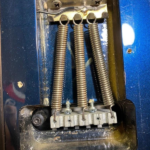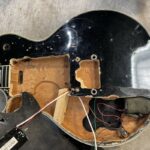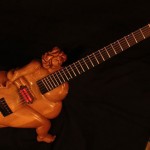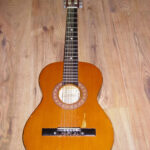In the world of guitar oddities, few instruments can match the quirky charm of the 1958 Stratosphere. With its half-professional, half-amateurish DIY appearance, it stands as a testament to an era when the art of crafting a solid-body electric guitar was still evolving. While pioneers like Leo Fender had already cracked the code, others were still experimenting, leading to fascinating creations like the Stratosphere.
The Stratosphere Guitar Company was founded in the mid-1950s in Springfield, Missouri by brothers Russell and Claude Deaver. They offered three models:
- A six-string
- A twelve-string
- The Twin, a double-neck featuring both six and twelve-string necks.

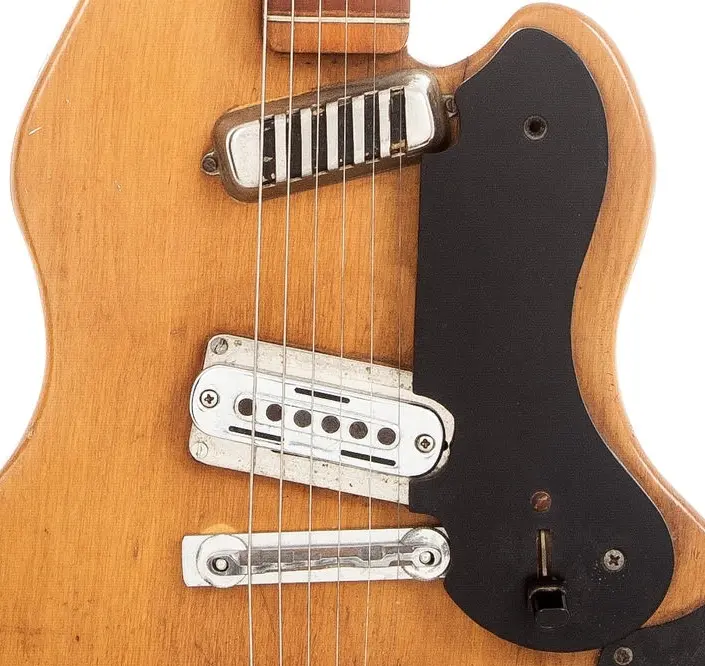
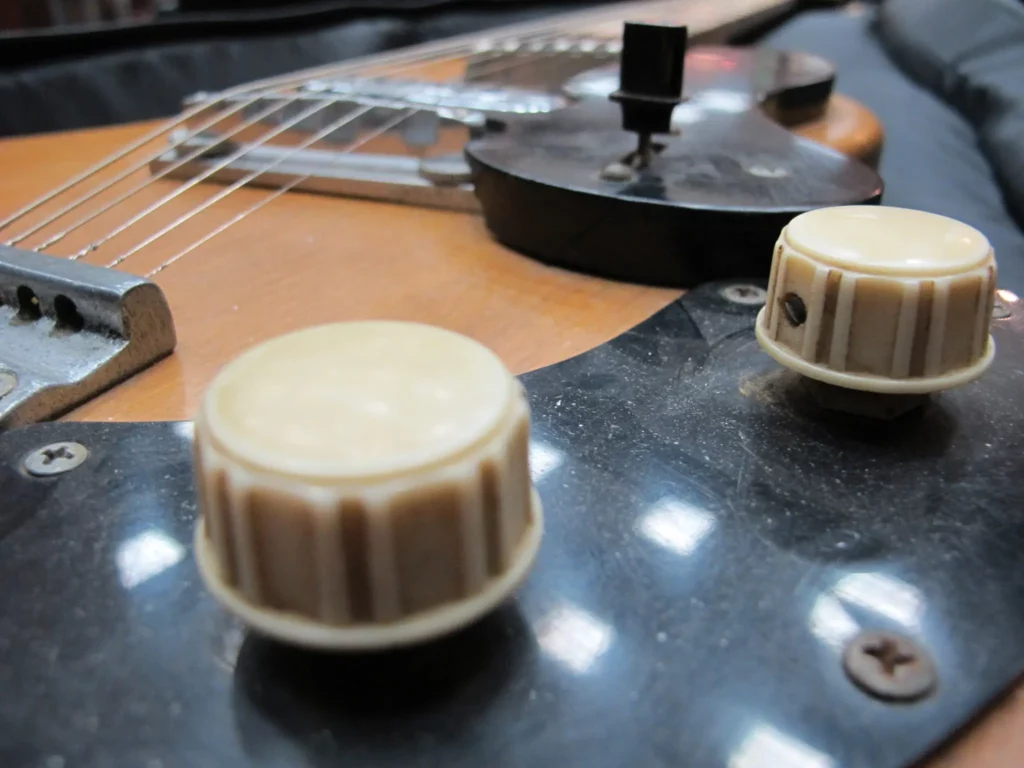
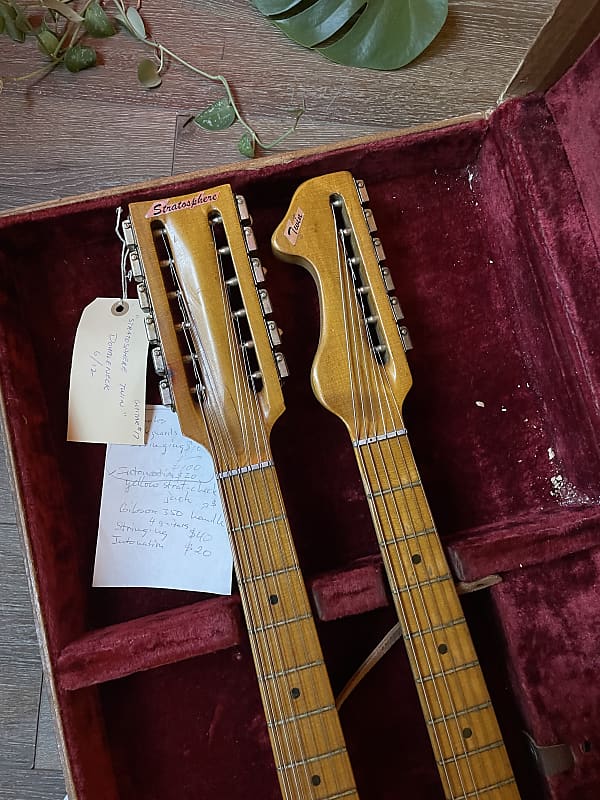
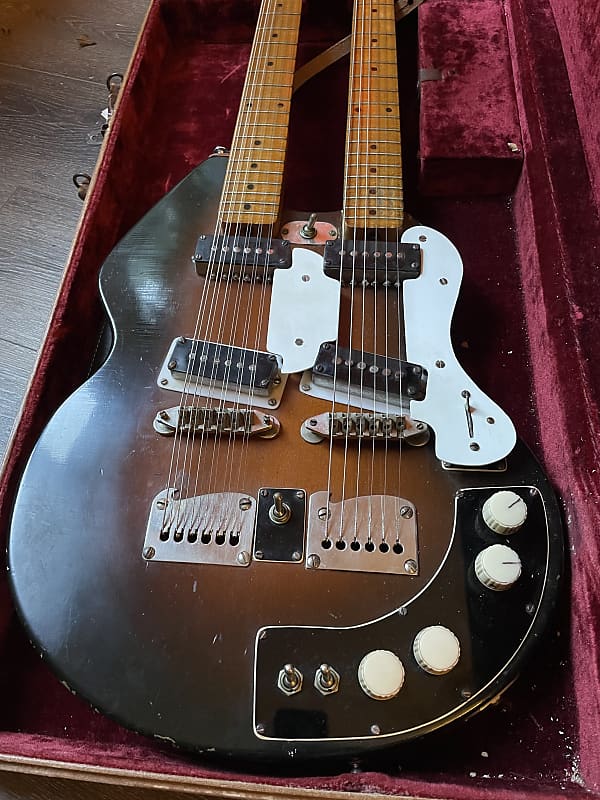
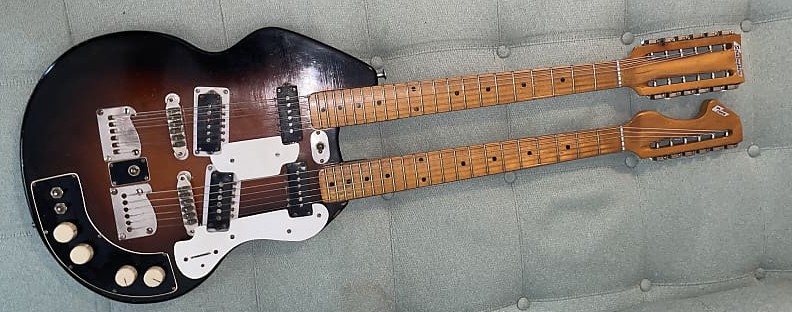
Back then, there were no readily available parts like pickups or bridges, so the Deavers made their own from scratch. Despite producing fewer than 200 guitars, their innovative designs caught the eye of legendary country guitarist Jimmy Bryant.
Jimmy Bryant fell in love with their double-neck guitar, which had a unique feature: the paired strings on the 12-string neck were tuned in thirds rather than octaves or unison. Bryant was so inspired by the harmonized sound that he composed “Stratosphere Boogie” in honor of the guitar.
What If This Stratosphere Oddity Became the Standard Electric Guitar Instead of the Stratocaster?
Yes, authoritatively we decided that the Stratocaster is the generic standard electric guitar! There is no debate! And if you wanna debate, the comments section is your turf!
So, what if?
Well, the DIY culture would’ve been even more widespread than it is today.
Every guitarist on stage would sport the rugged, handmade aesthetic. Everyone out there would crave that signature look. People might think DIY craftsmanship is the mark of a pro, and everyone would be slapping together guitars from spare parts and old furniture.
Well that last part is the reality of a lot of DIYers out there, right?
“Factory-built” would be an insult in the guitar world. Guitars would be like grandma’s cookies—homemade and a little rough around the edges, but all the more beloved for it. Every guitarist would believe that homemade is best!
As a consequence, guitar shops would be full of miscellaneous, one-off parts as players build custom bridges and pickups. Luthiers might become part mad scientist, part artisan, working with whatever they can find. Though we have to admit that’s what they are in our reality.
As for the music landscape, it would’ve been a bit different…
Harmonized leads would be everywhere! Thanks to the Stratosphere’s unique tuning options, bands would be filled with self-harmonizing guitarists. Imagine the double solos—no, double everythings—leading to an era of dizzying, harmonized rock. Auto-tune much! We would live in the Stratosphere-tune era!
Imagine the music genre shake-up we missed! Entirely new genres of music could have been but never did, alas. We could have Strato-country, Strato-blues, or even Strato-jazz, each with its own signature harmonized twang.
The tone quest would be something very different. Tone seekers would be united in the quest to replicate the Stratosphere’s original sounds, and tones.
But this is not what happened…
The 1958 Stratosphere is just a footnote in the history of electric guitars. No diss though! It’s a fascinating glimpse into a bygone era of creativity if not innovation. It didn’t become a standard but its legacy sort of lives through the DIY guitar culture we like so much at Guitar Fail.
Everyone drools over vintage Fenders and Gibsons. But it’s the rare oddities such as the the rough-and-ready Stratosphere that reminds us all the outside the box thinking the electric guitar pionneers put in their craft.




